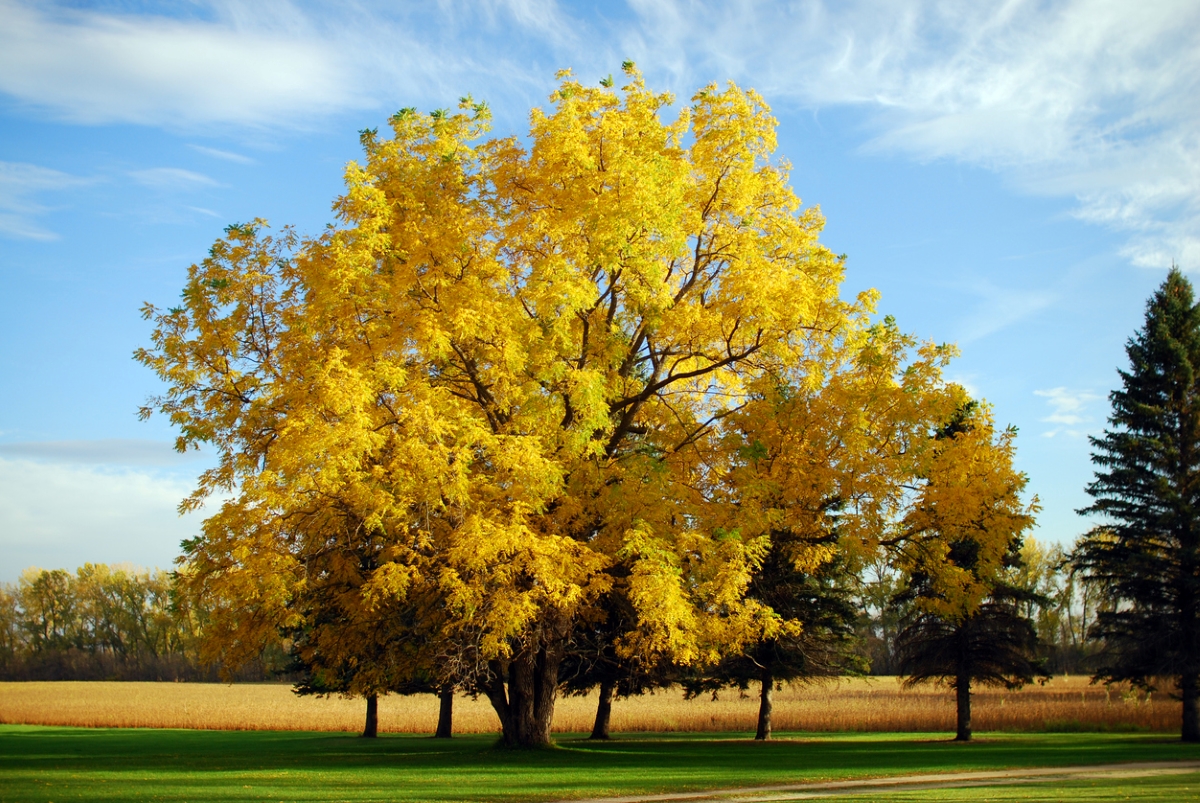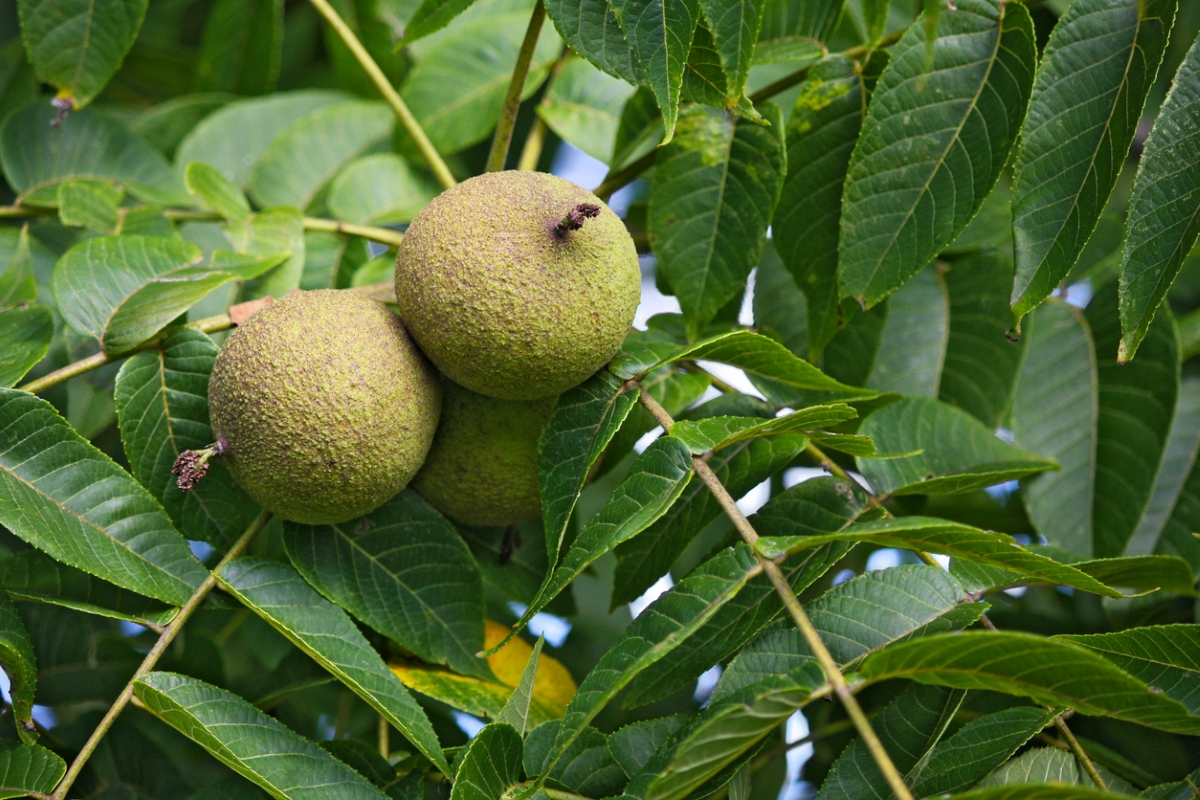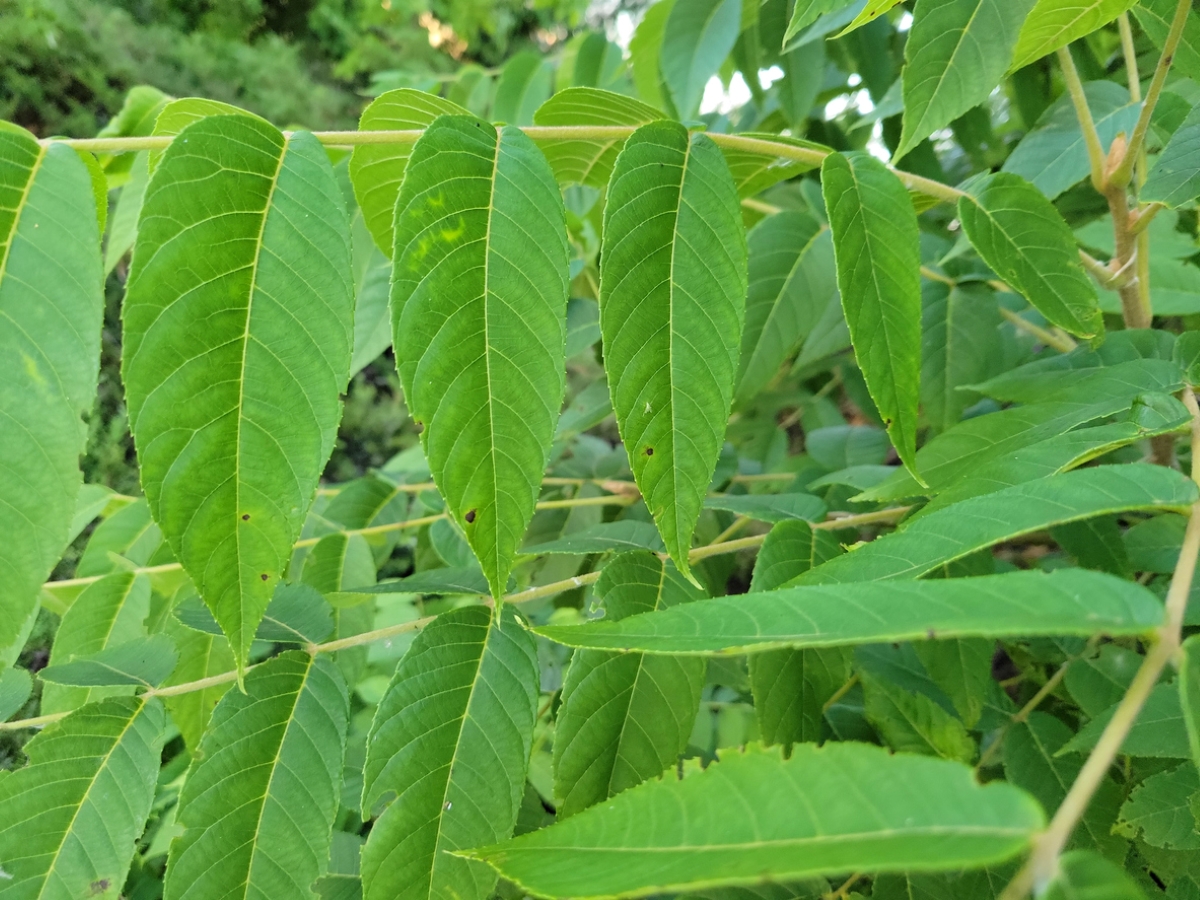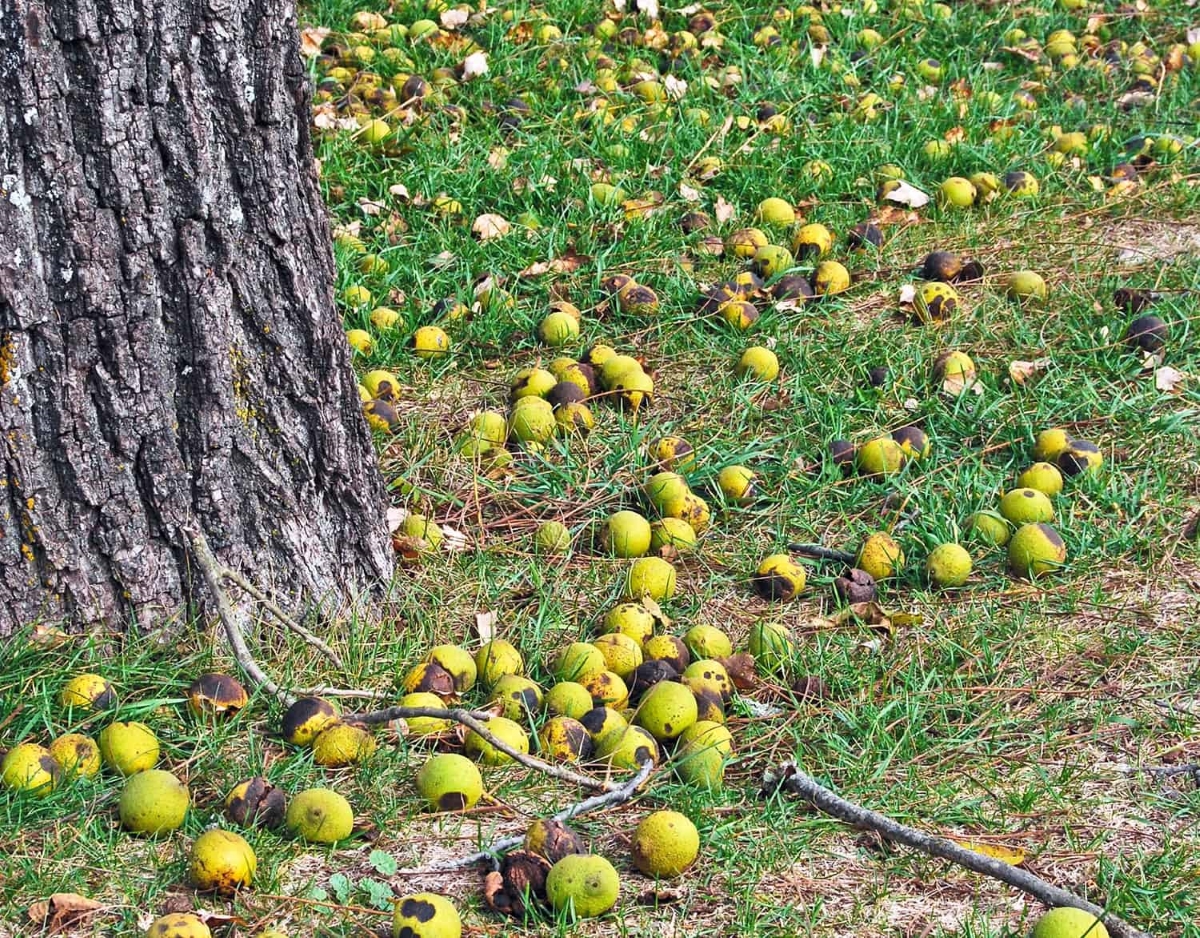

We may earn revenue from the products available on this page and participate in affiliate programs. Learn More ›
Often grown in the eastern United States, all types of walnut trees are large deciduous trees prized for their dark brown hardwood, according to the National Park Service. This species is highly regarded for providing wood for high-end furniture and cabinetry, its grandiose stature that produces extensive shade, and of course the nutritious nuts that it produces.
However, black walnut trees can have some negative effects on the landscape since they produce a chemical called juglone, warns Andrew St. Clair, a certified arborist and tree risk assessor with Joshua Tree Experts, a tree service with locations in several states. “This chemical can inhibit the growth of many tree and shrub species planted in proximity to the walnut trees, so homeowners want to make sure they know if and where they have black walnut trees,” he says. Additionally, the walnuts can be poisonous to dogs and horses.
Explore below to learn how to identify a walnut tree or black walnut sapling to protect your pets and landscaping.
Black walnut trees bring several benefits.

From the grandeur of the trees’ spread to the rich color of the bark, black walnut trees are awe-inspiring to look at in the yard. These trees also offer a number of positive attributes that are attractive to homeowners, such as producing extensive shade, tasty walnuts, and habitat for wildlife.
- Extensive shade. The leaves of a black walnut tree create a light, airy shade coverage, which is particularly welcome on large properties.
- Hardiness. Black walnut trees grow in deep, fertile soil and are not often affected by pests or disease.
- Low maintenance. According to St. Clair, black walnut trees “grow relatively easily and require little maintenance as they age.”
- Wildlife habitat. The planted trees provide important habitat for wildlife. Specifically, the partially hollow trunks and branches attract bees, carpenter ants, squirrels, raccoons, opossums, owls, woodpeckers, bluebirds, and chickadees.
- Wood for valued products. “Black walnut trees are one of the most valuable commercial wood species,” says Lisa Tadewaldt, arborist and owner of Urban Forest Pro, a certified arborist firm in Portland, Oregon. The durable rich-brown heartwood is sought after to make furniture, cabinetry, fence posts, poles, and window sills.
- Healthy edible walnuts. Filled with flavor and crunch, black walnuts contain numerous nutrients, including antioxidants, polyunsaturated fats, phenolic compounds, fiber, protein, melatonin, and folate.
- Other uses of walnuts. These durable nuts can also be used to create a dye for paper and fabric. Also, the shells can be ground up and used as an ingredient for pet litter, paint stripping, blast cleaning, and cosmetics.
They are allelopathic.
The biggest drawback of black walnut tree varieties is their allelopathic nature, which means they produce a biochemical that hinders the germination, growth, survival, and reproduction of other organisms. This species exudes a chemical called juglone, which is toxic to common trees and plants including fruit trees, pine trees, chestnut trees, azaleas, hydrangeas, rhododendrons, chrysanthemums, lilacs, blueberries, blackberries, tomatoes, peppers, potatoes, cabbage, and peas.
Juglone is found in the tree’s trunk, leaves, bark, twigs, fruit husks, and roots, which may extend 50 feet or more. The chemical can also appear in the soil directly under the tree. While producing this substance benefits the black walnut tree by limiting competition, it harms other vegetation, causing yellowed, wilted leaves and ultimately death from being exposed to juglone.
How to identify black walnut trees:
Figuring out black walnut tree identification is imperative for homeowners to determine if a black walnut tree is on their property. This way, not only can they reap the benefits that come with this species, but they can also take precautions given the harmful chemical the tree produces that can impact surrounding vegetation. Here are the best ways to recognize a black walnut tree.
Mature Size
Black walnut trees are admired for their height and extensive network of branches that provide welcome shade and privacy. These trees are large, typically growing over 50 feet and even as high as 120 feet. The canopy is round in shape and expansive, spreading about 50 to 75 feet wide.
Leaves

As deciduous trees, they lose their leaves in wintertime. When in leaf, however, black walnut trees can easily be recognized by their distinctive greenery. According to St. Clair, walnut tree leaves are “compound leaves with oppositely growing leaflets.” Compound means they are composed of a main stem and many separate leaves. Look for 15-23 narrow, pointed leaflets arranged opposite from each other. The color of the leaves in the fall ranges from bright yellow to greenish-yellow. The lower surface of a walnut tree leaf is paler and hairy. Once leaves fall off the branches, the scar left behind on the stem is shamrock-shaped.
Bark
Search for black walnut trees by the color of their bark—varying from pale, grayish brown to deep chocolate brown. The texture of the bark is unique. “The bark is deeply ridged in a vertical fashion and can extend into the branching,” notes St. Clair. The ridges are broad with rounded or sharp edges and appear to form a diamond pattern.
Branches
Black walnut trees grow straight up with minimal lower branches. The branches are firm and hairy, with bark deeply ridged out onto the branches.
Fruit

The most characteristic feature of this type of tree is the walnut itself. Before the nuts appear, look for small yellowish-green flowers in the spring that appear as a drooping catkin, a slim, cylindrical flower cluster. “Black walnut trees will produce walnuts encased in a green semi-hard shell,” notes St. Clair. “They will remain on the tree in the growing season and then fall off the tree in fall.” These sweet, oily, rounded nuts have irregular grooves and grow to about 2 to 3 inches in diameter. Grown in clusters, the fruit is green and turns blackish brown as it ripens. Squirrels enjoy nibbling on the nuts, and they also attract banded hairstreak butterflies. The biggest challenge for homeowners is having to clean up all the fallen nuts that can be a real nuisance.
Scent
Finally, figure out if there is a black walnut tree in the yard by taking in a big whiff. Both the fruit and leaves have an unmistakable spicy citrus scent. St. Clair clarifies, “The fruit smells lemony and also chemically. You either love it or hate it!”
It’s possible to garden around black walnut trees.
What if you have a black walnut tree on your property and want to grow other plants as well? Because of the toxic quality of the juglone that can extend to other plants in the area, it can be difficult to get much to grow under a black walnut tree.
“The plants that are going to grow under a walnut tree are going to be very limited,” explains Tadewaldt. “There are lists available of walnut-tolerant plants, but I recommend a trial-and-error approach as some are going to be more successful than others.”
She suggests looking around the neighborhood for plants that others have successfully grown under a walnut tree. “I also recommend perennials, as these plants are going to be harder to establish and it makes sense to not try to grow something new each year.” Woody ornamentals are also a good choice.
